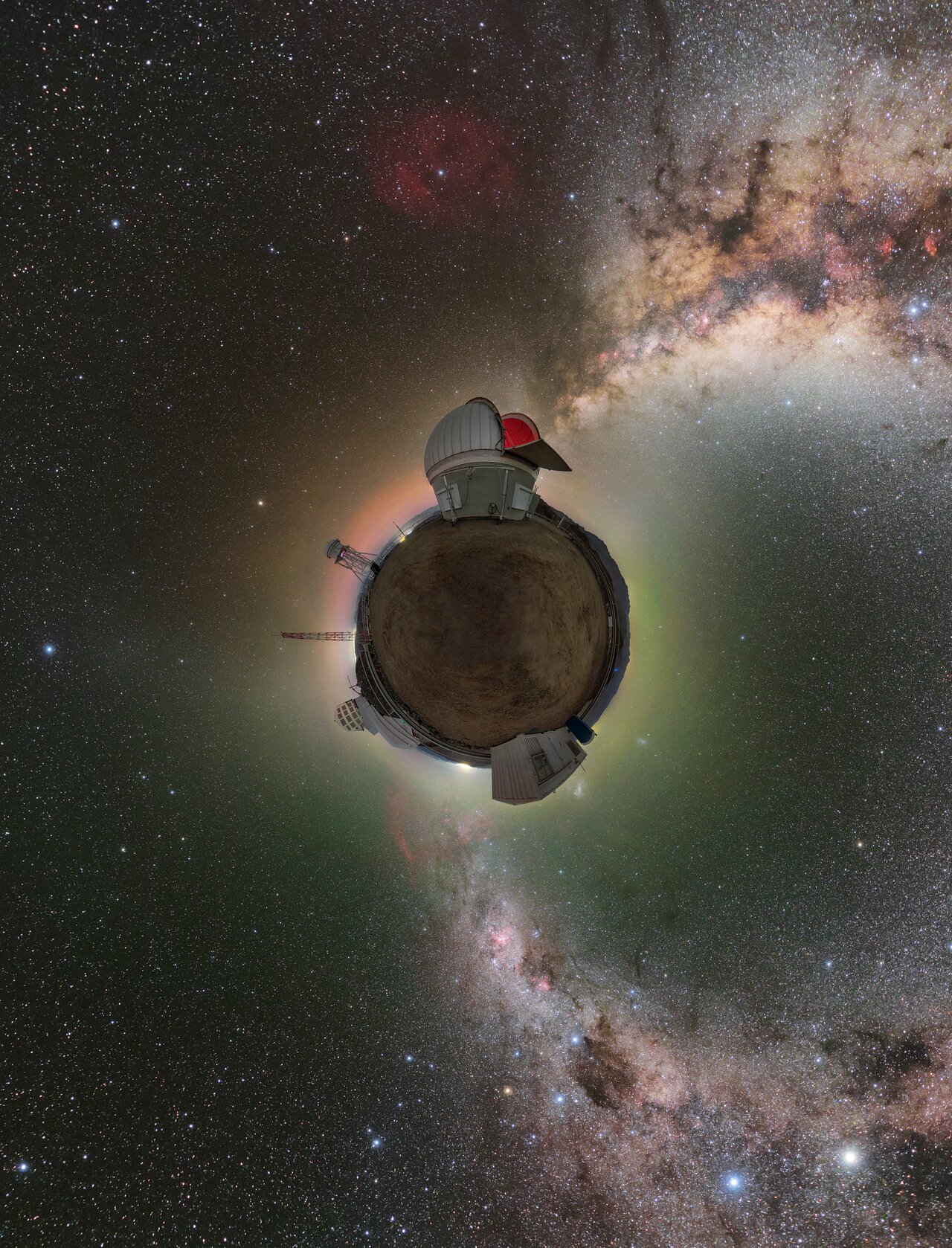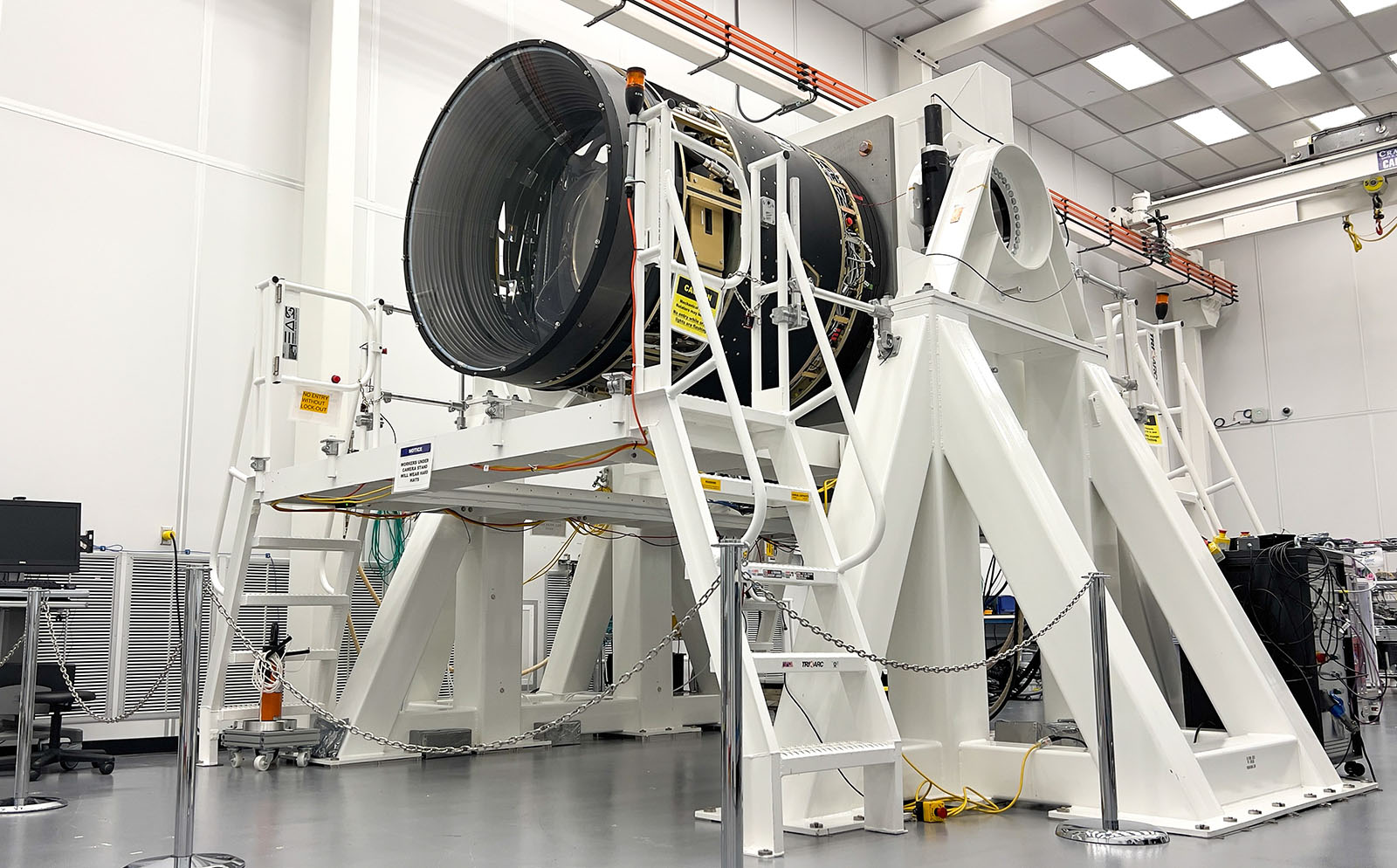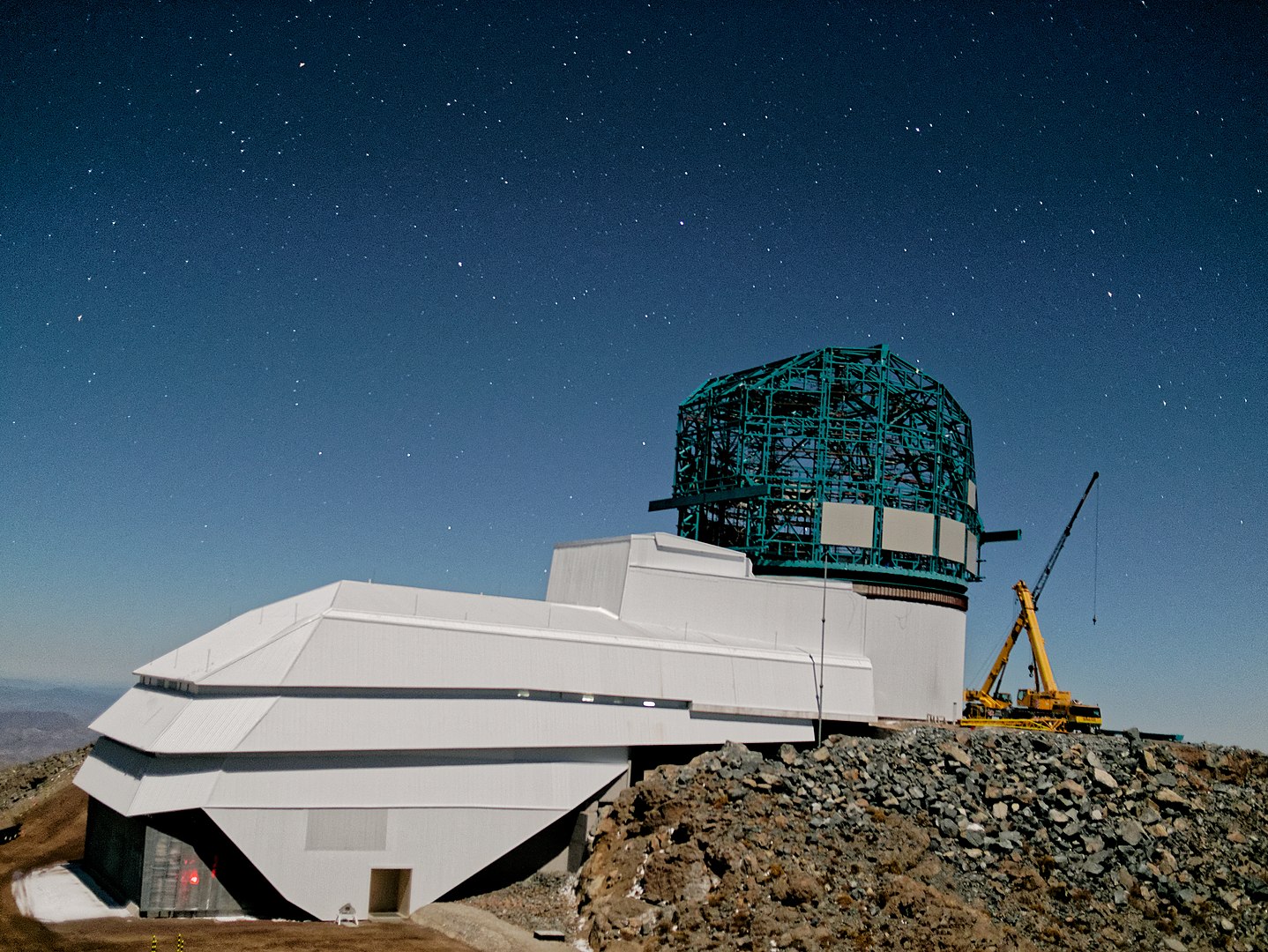This surreal image, which looks like a planet in space, is actually a 360-degree reflection of the Vera Rubin Astronomical Observatory. This Chilean observatory is still under construction. When the observatory is put into operation, it will become the home of the most powerful digital camera in the world, which will create a unique and most detailed map of the universe.

This impressive image of the observatory at the top of Cerro Pachon Mountain, located at an altitude of 2,700 meters above sea level, was taken by astrophotographer Petr Horálek from the Czech Republic. He used a Canon Ra camera with a Sigma 35mm lens to do this, taking a series of 10-second shots that were then stitched into a single panorama.
“Pachon has epic night sky, and I felt I was literally within reach of the Universe … and also photographing something historically epic. The Rubin Observatory will be the best survey telescope for many years ahead … so what a feeling capturing the new epic history of astronomy,” the astrophotographer shared his impression.

After the launch of the telescope in August 2024, the Legacy Survey of Space and Time (LSST) ten-year survey mission will take place, which will scan the sky every night and create approximately 20 terabytes of data. Scientists hope to discover new objects such as asteroids and supernovae, as well as add another 20 billion galaxies and stars to the general catalog.
The LSST camera, which is the size of a small car and weighs three tons, is equipped with a 3,200-megapixel sensor and a 1.5-meter lens. To reduce the noise level, the sensor is cooled to -100°C. The camera can detect light from near ultraviolet to near infrared and consists of 189 charge-coupled sensors located in a 21-square three-by-three array mounted on platforms known as slabs.

The focal plane of the camera is 64 centimeters wide and corresponds to a field of view of 3.5 degrees, which allows scientists to capture an area more than 40 times larger than the full moon in the sky at each exposure.
According to livescience.com
Follow us on Twitter to get the most interesting space news in time
https://twitter.com/ust_magazin


